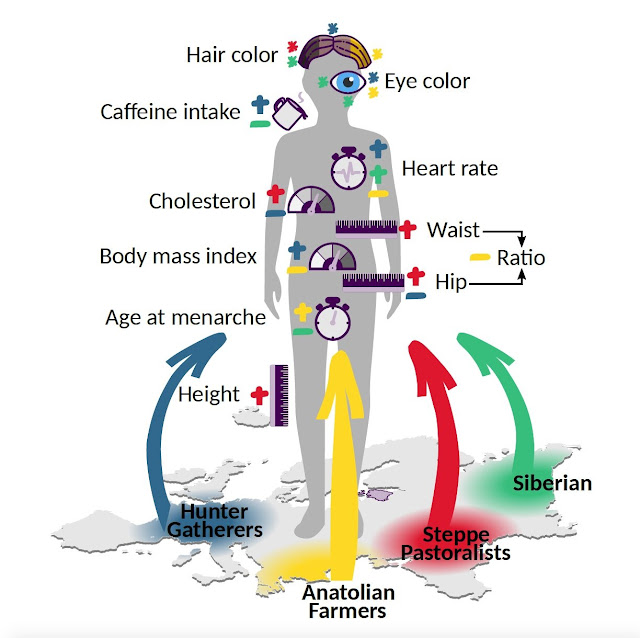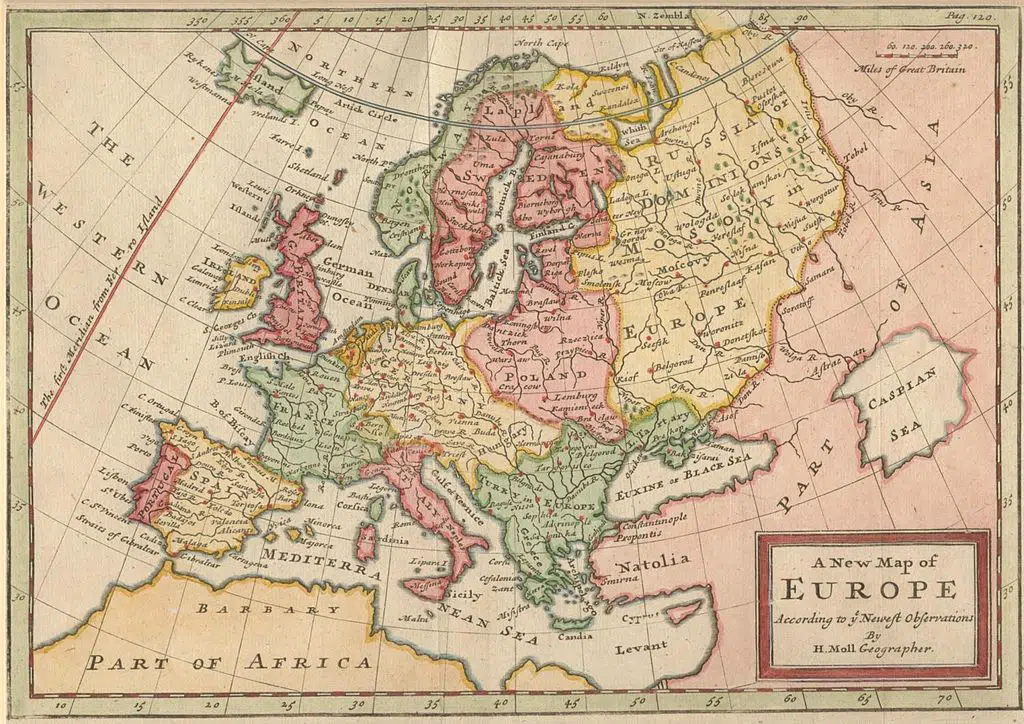
A recent study shows just how the genetic traits of Europeans came about, with most of our attributes coming from the movement of peoples over the last 10,000 years.
It was at that time that local European hunter-gatherers intermixed with incoming Anatolian Neolithic farmers and Pontic Steppe pastoralists, giving us the traits that we have today, according to Dr. Davide Marnetto from the Institute of Genomics of the University of Tartu, Estonia and University of Turin, Italy and Professor Luca Pagani from the University of Padua, Italy.
The result of their research shows just how this ancient mixing of peoples shapes our bodies today.
Genetic traits of Europeans from Hunter-Gatherers, Anatolians, Steppes peoples and Siberians
As seen in Current Biology, the impact of these ancient migrations is seen in some complex traits, including physiology and appearance, in contemporary Europeans.
These ancient gene pools, mostly from the aforementioned groups, along with some Siberian genes, as seen in Estonians and others including the Finno-Ugric speaking peoples, were studied, with the researchers scoring what they believed to be the contribution from each group — either an increase, a decrease, or no difference — to the body and health traits possessed by Europeans today.
Dr. Marnetto used symbols to indicate which traits were most likely to have been contributed by a certain group to the genome of modern Europeans. For example, eye and hair color are coordinated with the symbols for a given ancestry.

Average heights for Europeans are determined by genes from the Steppe pastoralists, who lived in the area between the Caspian and Black Seas, whereas eye color was more likely to have been inherited from the Anatolian farmers, Hunter Gatherers and the Siberians.
These human populations were separated for thousands of years, leading them to evolve in different directions; after they met each other as a result of migrations, their genes that characterized them mixed, creating new genetic patterns.
There had been studies in the past that delved into ancient genomes, and enlarging upon a range of biological traits of these distinct populations, including the origins and the natural selection forces that produced and passed on traits such as lactase persistence, height, and skin, eye and hair color.

Dr. Marnetto, the lead author of the study, says his research differed markedly from that tactic, essentially starting with modern Europeans and going back in time. “With our study, instead, we asked how the physiology and appearance of contemporary Europeans are influenced by these ancient footprints that are still embedded in their genomes,” he stated.
“As a case study, we used the Estonian population, which also displays some genetic components frequent in present-day Siberian populations, because of the rich data provided by the Estonian Biobank, where we could find the genome and trait characterization for more than 50,000 samples,” he says in the paper.
He and his team measured whether having a certain feature, e.g. high cholesterol, “is coupled with having inherited more variants from a specific ancestry, exactly in those DNA regions influencing cholesterol levels,” explains Marnetto.
Related: Burial from 10,000 years ago was earliest known infant burial in Europe
Professor Luca Pagani, a senior author of the study, notes that “Our results show that the ancient populations that formed contemporary Europeans were differentiated enough to contribute their own signature to the physiology and appearance of contemporary individuals.”
One trait that was given to Europeans is a strong build, which the researchers attribute to Steppe ancestry, with tall stature and increased hip and waist circumferences some of the hallmarks there. However, higher blood cholesterol, which tends to be lower in individuals carrying Hunter-Gatherer ancestry at specific genes, is one less desirable trait that was handed down from the peoples of the Steppes.
Hunter-Gatherers and Anatolians are linked to having higher body mass indexes (BMI) as well. According to the researchers, Anatolian ancestry is associated with a reduced (BMI-corrected) waist-hip ratio and a lower heart rate as well.
The authors of the paper also note that they found “substantial differences in ancestry or evidence for recent natural selection in eye and hair pigmentation, body caffeine intake, age at menarche and sleep patterns.”
Complex traits encoded by many genes
Professor Mait Metspalu, a co-author of the study, explains “we drew our conclusions relying on specific parts of the genome, while using the rest of the genome as control, to observe subtle effects by contrast.
“This means that it is misleading and naive at best to use any given trait to guess the dominant ancestry across one’s genome,” he notes. He says it does not just matter how much of a certain ancestry one has in their genome, but rather where and which genes this ancestry contributed, even for complex traits encoded by many genes.
This is why Metspalu holds that it is simplistic to interpret trait patterns across Europe only as the result of having one ancestry or another without taking into account the environment and other evolutionary forces. ”
Furthermore, it is important to remark that the link we made between a given trait and a given ancestry does not imply that such a trait was predominant in a particular ancient population or absent in all other groups,” Metspalu points out.
The authors add that their focus on Europeans is in part because there is a dearth of data from other ethnicities at the present time.
“There is absolutely no evidence indicating that Europe encompasses higher genetic diversity and more complex heritage than other continents: an increased coverage of samples from across the world is crucial to enhance our understanding on how past human history shaped the trait variability displayed by contemporary individuals,” Marnetto concludes.
See all the latest news from Greece and the world at Greekreporter.com. Contact our newsroom to report an update or send your story, photos and videos. Follow GR on Google News and subscribe here to our daily email!



